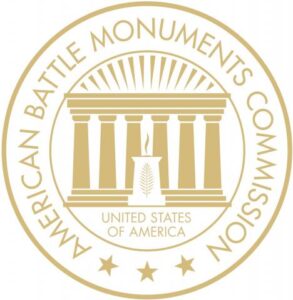About this Chapter
Bringing the Great War Home: Volume II, Chapter 1: Getting to the Heart of World War I illustrates a variety of ways to bring the scale of American involvement in World War I home to students through a resource easily accessible by classroom teachers, American Armies and Battlefields in Europe, also known as the Blue Book, by ABMC. Using maps, statistics, and written sources referenced in the Blue Book and other ABMC materials, teachers can find windows into the large themes of the war and help students grasp the importance of this war not only to world history, but to American lives.
The activities within this chapter will help students answer the following questions:
- How can students use the Blue Book to practice close reading of written sources and identifying fact, opinion, and perspective in order to develop a richer understanding of the United States’ role in World War I?
- How can students use maps and statistics from the Blue Book to describe and evaluate the United States’ contribution to the Meuse-Argonne offensive and World War I?
- How can students synthesize information from the written narrative, maps, and statistics of the Blue Book to build an argument about the United States’ contribution to the outcome of World War I?
This chapter is part of the iBook Bringing the Great War Home: Teaching With The Meuse-Argonne American Cemetery, produced by ABMC in partnership with Learn NC and Virginia Tech. You can access individual elements of the iBook here on ABMC.gov or download the full iBook through iTunes.
In this Chapter:
- Section 1: Introduction
- Section 2: Written Sources: Identifying Fact, Opinion, and Perspective
- Section 3: Interpreting Maps as Sources
- Section 4: Interpreting Statistics as Sources
- Section 5: Synthesizing Multiple Sources to Build an Argument: Creating Infographics
- Section 6: Conclusion
- Section 7: Instructional Menu
- Section 8: Bibliography
- Section 9: Video Transcriptions
- Section 10: Credits and Disclaimers
Chapter Materials
American Armies and Battlefields in Europe: A History, Guide and Reference Book (Blue Book)
Bringing the Great War Home: Preface and Acknowledgements (PDF)
Section 2—Battling Interpretations Worksheet.pdf
Section 2—Why Fight Worksheet Answers.pdf
Section 3—Maps as Artifacts Gallery.pptx
Section 3—Reading Maps Gallery.pptx
Section 3—Reading Maps Handout.pdf
Section 4—A Death Gallery.pptx
Section 4—Images of Death Worksheet.pdf
Section 4—Running the Numbers Packet.pdf
Section 4—Running the Numbers Worksheet Answers.pdf
Section 4—Statistics Examples.pptx
Section 4—The Yanks Are Coming Annotated.JPG
Section 4—The Yanks Are Coming.JPG
Section 5—Infographic Planning Sheet Rubric.pdf
Full Chapter Download
Bringing the Great War Home: Volume II, Chapter 1: Getting to the Heart of World War I
Lesson Plans

Battling for Your Interpretation – How the U.S. Portrays Key Battles
 An official website of the United States government. Here's how you know.
An official website of the United States government. Here's how you know. 
